![]()
October 7, 2005 | By David Meir-Levi
First published by the freerepublic. Part 3 of a comprehensive study (published by the Center for the Study of Popular Culture, LA, California, USA, 7 october 2005) about the lies and myths that fuels the propaganda war against Israel and its existence as a Jewish State. Because of the extensive length of this study, it’s published according to the original 3 chapters. Read Part 1: here and Part 2: here.
The Question of Occupation and the Settlements
Besides the refugee problem, the two most prominent issues in the Arab propaganda war against Israel are the alleged Jewish occupation of Arab lands and the existence of Israeli settlements in the West Bank and Gaza Strip. To peel away the myths enveloping these issues and proceed to the realities beneath, it is necessary to review their history within the context of the Arab war against Israel, which has been going on without interruption since the creation of Israel in 1948, and which includes the Arab hostility towards the Jews before that.
Historical Background
Early Zionism
Zionist pioneers from the middle of the 19th century onward joined the local Jewish communities in rebuilding a Jewish homeland in what was then the Turkish Empire by purchasing land from the Turkish Crown and from Arab landowners (effendi). There was no invasion, no conquest, and no theft of Arab land — and certainly not of a land of Palestine, since the Arabs living in the region had been Turkish subjects for 400 years. Unarmed and possessing no military, the Jews bought so much land from Arabs that in 1892, a group of effendi sent a letter to the Turkish Sultan, requesting that he make it illegal for his subjects to sell land to the Jews. Their successors did the same thing, via a telegram, in 1915. Evidently, the very presence of Jews owning land in the Middle East — however legally acquired — was offensive to some.
It is indisputable that there was no theft, because no one complained of any. No Arabs were driven from their homes. In fact, as a demographic study published by Columbia University demonstrates[5], the Arab population of the area grew tremendously during this period in part because of the economic development that the Jews helped to generate. Between 1514 AD and circa 1850, the Arab population of this region of the Turkish Empire was more or less static at about 340,000. It suddenly began to increase around 1855, and by 1947 the Arab population stood at about 1,300,000 — almost quadrupling in less than 100 years. The exact causes of this population rise are beyond the scope of this essay, but the causal correlation between this independently documented phenomenon and the Zionist enterprise is beyond rational argument.
Far from driving out any Arabs, stealing their land or ruining their economy, the work of the Jewish pioneers in the 19th and early 20th centuries actually enabled the Arab population to quadruple, the economy to enter the modern era, and the society to slough off the shackles of serfdom that typified the effendi-fellah (land-owner/serf) relationship of the Ottoman era. An Arab working in a Jewish factory or farming community could earn in a month what his father earned in a year eking out a living as a subsistence-level farmer using medieval technology. Arab infant mortality plummeted and longevity increased as the Jews shared their modern medical technology with their Arab neighbors.
Much of the land that the Zionists purchased was desert and swamp, uninhabited and deemed uninhabitable by the Arabs. Modern agrarian techniques instituted by the Jews and the blood and sweat of thousands of idealistic Zionists reclaimed that land and turned it into prime real estate with flourishing farms and rapidly growing communities sporting modern technology and a healthy market economy. As a result, Arab migrants poured into the region from surrounding states, with hundreds of thousands seeking a better life and greater economic opportunity. Based on the above, it is fair to suggest that a significant plurality, if not a majority, of Arabs living in Israel today owe their very existence to the Zionist endeavor.
Validation of this history, which is quite at variance with the standard Arab propaganda, comes from a surprising source. Sheikh Yousuf al-Qaradhawi, international Arab terrorist and lieutenant to Osama bin Laden, in a televised speech in May, 2005, chided his followers with the following words: “Unfortunately, we [Arabs] do not excel in either military or civil industries. We import everything from needles to missiles…How come the Zionist gang has managed to be superior to us, despite being so few? It has become superior through knowledge, through technology, and through strength. It has become superior to us through work. We had the desert before our eyes but we didn’t do anything with it. When they took over, they turned it into a green oasis. How can a nation that does not work progress? How can it grow?” (More academic validation can be found in Palestinian-born Professor Rashid Khalidi’s “Palestinian Identity”, in Kimmerling, B., and Migdal, J. The Palestinian People, and in the as yet unpublished doctoral thesis of Dr. Sandi Sufian, a Palestinian now doing post-doctoral work at the University of Chicago.)
It was precisely this success of the Zionist endeavor that aroused the fear and ire of Arab leaders. Zionist progress, technology, economy, and the Jews’ willingness to share this technology with their Arab neighbors radically threatened the medieval stranglehold of the effendi over the fellahin (peasantry). Turkish methods of insuring tranquility under the Sultan were rather draconian. Consequently, as part of the Turkish Empire, the Arabs in the region did not wish to risk civil disturbance, and therefore maintained a stoic sufferance of the Jewish presence that some have interpreted as tolerance. But the British rule that followed the First World War was not so severe. When Britain took over the governance of British Mandatory Palestine (today the states of Israel and Jordan), Arab leaders discovered they had a much freer hand. Stoking religious hatred and fanning the flames of fellah resentment with lies about the Jews’ intent to destroy Islam, representatives of the leading effendi families led by the Hajj Amin elHusseini began an Islamic jihad involving a series of pogroms against the Jews.
Peel Partition Plan
From 1919 to 1936, Arab violence against Jews expanded in scope and grew in brutality. The British did almost nothing to curtail it and sometimes abetted it. Lord Earl Peel led a commission of inquiry in 1936 with the goal of finding a solution to the seemingly endless violence. His suggestion was partition. Let the Jews have their state on the 15% of lands that they have purchased and redeemed. Let the Arabs have theirs on the remaining 85%. In other words, the very idea of partition became an agenda because the Arabs could not live peacefully beside Jews.
In 1922, Britain ceded all of the Palestine Mandate east of the Jordan River to the emir Abdullah. This became the Hashemite Kingdom of Jordan, with a majority Palestinian population that by law permitted no Jew to enter. When offered their own state in 1937 on roughly 85% of British Mandatory Palestine west of the Jordan River, the Arab leaders chose war and terrorism. This was the “Great Arab Revolt” of 1937-1939. With World War II in the offing, Britain lost no time in brutally crushing the uprising.
Meanwhile, the pioneering Zionist endeavor continued with the purchase of more crown land from the British. It is important to note that according to international law, what had been crown land under the Turkish Empire was now legally crown land under the British Mandate. The disposition of that land through legal purchases was well within the rights of the British. It also conformed to the parameters of international law. When the West emerged victorious from World War II, Zionist organizations owned about 28% of what is today Israel, and private Arab land ownership or British crown land accounted for the rest.
With the end of the war, Arab leadership again promoted violence and terrorism against Jewish settlements and against the British. The majority of Jewish leaders preached restraint and practiced the exploration of political solutions via the newly formed United Nations. A minority practiced terrorism against the British and violent reprisals against the Arabs.
UN Partition Plan
Sick of the violence and facing political crises growing out of economic problems following World War II, the British abandoned most of its empire and decided to place “the Palestine Question” into the hands of the United Nations. In 1947 several UN exploratory missions reached Lord Peel’s conclusion of a decade earlier. On November 29, 1947 the UN declared the existence of two states: a state for the Arabs on about 45% of the land, and the state of Israel for the Jews on about 55%. But more than half of the Jewish portion (60%) was the Negev desert, crown land largely unpopulated and believed to be worthless. The UN Partition Plan (UN Resolution # 181) created unwieldy boundaries between the two nascent states based upon the land ownership and population densities of the two groups.
The Arab states were members of the UN. Their membership presumably entailed a willingness to abide by majority decisions of the newly formed world body. But they did not.
In high-handed defiance of the UN partition plan, they launched a war of aggression which, by their own public rhetoric, was to be a war of annihilation. Their intent was not to correct some border dispute or to reclaim turf lost in an earlier battle. Their intention was to destroy the newly created State of Israel, and to dispatch by whatever means necessary its 605,000 Jews.
To their everlasting chagrin, the Arab states lost their war of aggression. In losing, moreover, they lost much of the territory that the UN had designated for the state of Palestine. However, even this remainder of what would have been Palestine (the West Bank and the Gaza Strip) was obliterated — by its two neighboring Arab states. Egypt maintained illegal occupation of the Gaza Strip, and Jordan illegally annexed the West Bank. Both actions were in high-handed defiance of international law and UN resolutions 181 and 194. There was no Arab or Palestinian protest over this. Why? The only conclusion that can be drawn is that in 1949, the Palestinians didn’t consider themselves “Palestinians” but Arabs, and in fact the term “Palestine” was universally used to refer to the Jewish state.
To add to the Arabs’ embarrassment, Israel offered them in 1949 a formal peace treaty in exchange for which Israel would return much of the land conquered in the war and allow the repatriation of some substantive portion of the Arab refugees created by the war (Rhodes Armistice talks, February — July, 1949). Had the Arab nations been willing to accept the UN partition plan, or had they been willing to accept the Israeli peace offer, not only would a State of Palestine have existed since 1949, but there would never have been an Arab refugee problem.
However, the Arab response was: no peace. The refugees would return to their homes only when they could fly the flag of Palestine over the corpses of the Jews. Better Palestinians should rot in squalid refugee camps than that the Arabs should acknowledge a non-Moslem state in their midst. As in 1937, Arab leaders rejected the possibility of a Palestinian state in favor of continued aggression against Israel. It was not the creation of the State of Israel that caused the refugee and other subsequent problems; it was the war of annihilation waged by the Arab states that created the refugees and rejected the second opportunity for the creation of a Palestinian state.
Pre-1967 Terrorism Against Israel
From 1949 to 1956, Egypt waged a terror war against Israel, launching about 9,000 attacks from terrorist cells set up in the refugee camps of the Gaza Strip. The 1956 “Sinai campaign”, in which Israel defeated the Egyptian army, ended Egypt’s terror war, even though the United States forced Israel to return the Sinai to Egypt without a peace treaty. But the terror continued on other fronts.
In 1964, the Palestinian Liberation Organization was created — not to liberate Palestinians from Jordanian and Egyptian rule — but to begin a 40-year campaign of terror against Israel with the openly avowed goal of “pushing the Jews into the sea.” Sponsored first by Kuwait, and later by Saudi Arabia, Egypt, Iraq, Iran and others, the PLO leaders declared unending war against Israel until all of “Palestine” was liberated, redeemed in “fire and blood”.
From 1949 to 1967 there were no Jewish settlements in the West Bank or the Gaza Strip. The “Palestine” that Arafat sought to “redeem” was not the West Bank or Gaza, where Palestinians were the abject subjects of Jordanian and Egyptian rule, but the entire State of Israel within its 1949 “green line” borders. It is instructive to read the original 1964 version of the PLO Covenant: Article 24. “This Organization (the PLO) does not exercise any regional sovereignty over the West Bank in the Hashemite Kingdom of Jordan, in the Gaza Strip or the Himmah area.”
Since the PLO’s original Covenant explicitly recognized Judea, Samaria, the eastern portion of Jerusalem, and the Gaza Strip as belonging to other Arab states, the only “homeland” it sought to “liberate” in 1964 was the state that belonged to the Jews. Three years later in 1967, five Arab states — including Jordan — attacked Israel. As a result of Israel’s victory in the war Israel now occupied the West Bank having defeated the Jordanian aggressor, who had illegally annexed the West Bank 18 years earlier. The PLO’s response to these events was to revise its Covenant, which it did on July 17, 1968. It removed the operative language of Article 24, thereby asserting for the first time a “Palestinian” claim of sovereignty to the West Bank and Gaza Strip. In other words, the Palestinian claim is asserted only against Jews.
The Jordanian occupation of the West Bank and the Egyptian control of the Gaza Strip were typified by brutal totalitarian repression. In the words of Arafat himself, in 1948 the Egyptians herded Palestinians into refugee camps, kept them behind barbed wire, sent in spies to murder the Palestinian leaders, and executed those who tried to flee. (Yassir Arafat in his authorized biography, “Arafat: Terrorist or Peace Maker”, by Alan Hart, 1982). There were no Palestinian protests of this oppression or behalf of any selfdetermination they felt they had been denied.
Belated Palestinian Nationalism
The reason why there was no agitation among Palestinians for their own national identity prior to 1967 is perfectly clear. The concept of Palestine as a nation and Palestinians as a separate people did not exist among the Arabs of the Turkish provinces that became British Mandatory Palestine after World War I. Despite the contorted, forced, and contrived narratives of apologists for the Palestinian war against Israel like Rashid Khalidi, Baruch Kimmerling and others, there was never any state called Palestine, no country inhabited by “Palestinians”, and before 1967 no concept of a separate political, cultural, or linguistic entity representing a defined group that could be identified by such an appellation.
In fact, the opposite is the case. Arab respondents to the UN’s 1947 inquiries argued that there never was, nor should there ever be, a Palestine. The area under discussion they claimed was historically part of southern Syria, and for centuries had been known as “balad esh-sham” (the country of Damascus). In fact, at that time, the term “Palestinian” was applied only to the Jews living in Mandatory Palestine. The Arabs of the region were known as “Arabs”.
In a March 31, 1977 interview with the Amsterdam-based newspaper Dagblad Trouw, PLO executive committee member Zahir Muhse’in said:
“The Palestinian people does not exist. The creation of a Palestinian state is only a means for continuing our struggle against the state of Israel for our Arab unity. In reality today there is no difference between Jordanians, Palestinians, Syrians and Lebanese. Only for political and tactical reasons do we speak today about the existence of a Palestinian people, since Arab national interests demand that we posit the existence of a distinct ‘Palestinian people’ to oppose Zionism. For tactical reasons, Jordan, which is a sovereign state with defined borders, cannot raise claims to Haifa and Jaffa, while as a Palestinian, I can undoubtedly demand Haifa, Jaffa, Beer-Sheva and Jerusalem. However, the moment we reclaim our right to all of Palestine, we will not wait even a minute to unite Palestine and Jordan.”
Even today, Syrian 5th Grade social studies textbooks show “Greater Syria” as Syria, Lebanon, Jordan, and Israel. There is no nation called Palestine. The concept of “Palestinians” as Arabs living for millennia in “historic Palestine” is a fiction created for the political and military purposes described by Zahir Muhse’in. This latter day frenzy of Palestinian agitations for national self-determination is simply the faux mantle of respectability behind which genocidal Arab terrorism can be perpetrated against Israel with the support of international do-gooders and “idealists.” After the Holocaust, Western liberals cannot look kindly upon genocidal terrorism; but they can embrace warmly and enthusiastically the deep and heartfelt yearnings of an oppressed people struggling to be free. Hence, Arafat’s terrorist propagandists needed to invent the lies of Palestinian National Identity and Israeli occupation and oppression.
The Six-Day War of 1967
Contrary to current Arab propaganda, but congruent with all news accounts contemporary to the events, Israel was the victim of Arab genocidal aggression in the 1967 War. On May 15, 1967, Egypt demanded that the UN peacekeeping forces, in place since the Sinai Campaign, evacuate at once. UN Secretary General U-Thant, for reasons never fully clarified, complied at once. Then, Egypt closed the Straits of Tiran, blocking the Israeli port of Eilat for shipping, and moved two tank battalions and 150,000 troops right up to Israel’s western border. A military pact with Syria and Jordan and illegal invasion of Israel’s air space for surveillance over-flights of the Israeli atomic reactor in Dimona rounded out the threats. These were five casus belli: actions defined in international law as so threatening to a sovereign state that each one creates a legitimate cause for defensive military response. Had Israel retaliated with lethal force after any one of these five, its military action would have been completely legal per international law, as legitimate defensive response to existential threats from an aggressor.
However, Israel did not retaliate immediately. It first tried political negotiations, but its complaints to the UN went unanswered. Its reminders to President Johnson that the United States had guaranteed in 1957 to intervene if the Straits of Tiran were ever closed, or if Egypt ever re-militarized the Sinai, fell on deaf ears. President Johnson was too heavily involved in the Vietnam war to consider American military action elsewhere, even though President Eisenhower, when he forced PM Ben Gurion to retreat from the Sinai after the phenomenally successful Sinai Campaign in 1956, had promised America’s eternal vigilance that Israel would not again face a military threat from Egypt.
After three weeks of watching the Egyptian-Syrian-Jordanian forces grow in size and strength on its borders, Israel tried one last diplomatic action. Via the UN commander of the peace-keeping forces in Jerusalem, Colonel Od Bul (a Norwegian), Israel’s government sent a written message to King Hussein of Jordan: if you do not invade Israel, Israel will not invade the West Bank. Jordan’s King superciliously tossed the note back to Colonel Od Bul and walked away.
On Monday, June 5, 1967, after receiving military intelligence that Egypt was within hours of launching an invasion via the Gaza Strip, Israel launched its defensive pre-emptive strike, an air attack that destroyed the air forces of Egypt, Jordan, and Syria while they were still on the ground. With the control of the skies firmly in Israel’s hand, its armor and infantry put Egyptian forces to flight, reaching the Suez Canal within two days.
Despite Israel’s warning, King Hussein of Jordan began an artillery bombardment of Jerusalem and other Israeli cities along the Green Line. After more than a day of bombardment, with scores of Israelis dead, hundreds wounded, and millions of dollars of damages, Israel sent a second message to the Hashemite king: if you stop the bombardment now, we will consider it your politically necessary ‘salvo of honor’; and we will not retaliate. This message was sent via the Romanian embassy, from its West Jerusalem (Israeli) ambassador to its East Jerusalem (Jordanian) ambassador. King Hussein ignored the warning and launched an infantry invasion of Jewish Jerusalem. It was only then that Israel responded with its own invasion of the West Bank.
After almost a week of Syria’s constant artillery bombardment of Israeli towns and villages in the Galilee, Israel conquered the Golan Heights, destroyed the Syrian artillery, and drove the Syrian army back to within 40 kilometers of Damascus.
Israel did not invade Egypt beyond the Suez Canal, although its forces could have advanced almost unopposed to Cairo. It did not cross the Jordan River, although the Jordan Legion was in disarray, as some troops had tossed their boots and rifles to more easily swim to the east bank. Nor did it continue its advance from the Golan Heights to Damascus, which it could have easily done in the wake of a terrified and decimated Syrian army. Israel stopped its advance on all three fronts after it had achieved its military objectives: the destruction of the armies that threatened its existence, and the establishment of defensible borders.
International Law and Israeli Sovereignty
Even one of the most critical of Israel’s historians, Professor Avi Schlaim, acknowledges that Israel was the victim of Arab aggression in the Six Day War. This is a crucial point in regard to the issue of Israeli settlements in and sovereignty over the West Bank and Gaza Strip. International law is very clear. Had Israel been the aggressor, its occupation of the West Bank and Gaza Strip would have been illegal, as would all future expansion of Israeli population into these territories.
However, as the victim of aggression, Israel’s legal position is exactly the opposite. The legal disposition of territories conquered in a defensive war can be determined only by a peace treaty between the belligerents. If such a peace treaty is absent, the continued sovereignty and economic activities of the victim of aggression over its newly won territories is completely legal as long as such activity does not unfavorably prejudice the indigenous inhabitants. In fact Israel’s sovereignty over the West Bank and Gaza Strip was beneficial, as we shall see, until their administration was turned over to the Palestinian Authority under the Oslo Agreements.
Immediately after the war, Israel offered to return conquered territory in exchange for a formal peace. The Arab nations rejected this offer, as they rejected similar offers after the previous Arab-initiated wars. Israel could legally have annexed all the newly won territories, but chose not to because it expected that eventually the aggressor nations would come to their senses and want their land back, and Israel would return some of these territories to their former occupiers in exchange for peace.
Israel did exactly this with Egypt, returning all of Sinai at the Camp David I accords in 1979. In these accords Egyptian leader Anwar es-Sadat refused to accept the Gaza Strip back, preferring that the Palestinians who lived there remain under Israeli sovereignty. When Jordan agreed to a peace treaty in 1994, King Hussein specifically excluded the West Bank from consideration, because by then 96% of Palestinians in the area were under the rule of the Palestinian Authority, and Hussein conceded that he had no legal claim to the area or its Arab population.
In sum, Israel is the only known country in all of history to come into existence via legal and beneficial land development (as opposed to the almost universal method of conquest). Israel’s victory in the 1948 war and in the 1967 war, in which it was the victim of genocidal aggression, and the refusal of Arab nations to join it in peace negotiations, give Israel the legal right to maintain its sovereignty over its newly won territories, and to develop those territories in any manner that is not prejudicial to the well-being of the indigenous civilians. Had Arab leaders been amenable to peace with Israel, there could have been a Palestinian state in 1937, and again in 1947, and again in 1949; and there would never have been an Arab refugee problem. Had Arab leadership in 1967 and again in 2000 been amenable to peace with Israel, there would never have been a continued Israeli sovereignty over the disputed territories of the West Bank and Gaza.
With this historical framework in place, one can understand the real issues behind the controversy over Israeli settlements in the West Bank and Gaza Strip and the legal status of the settlements.
The Settlements
There are five types of settlements:
- Agrarian settlements for military purposes manned mostly by soldiers;
- Settlements of Jews returning to sites occupied by Jews prior to 1948 (Hebron, Gush Etzion, Jewish Quarter of East Jerusalem);
- Expanding suburbs of Israeli cities on or near the “Green Line;”
- Settlements unrelated to the previous three types;
- Illegal rogue settlements.
A. Settlements for Military Purposes
Agrarian settlements manned by IDF soldiers were established soon after the war along what the IDF felt were crucial corridors of defense, especially along the Jordan river, near the “Green Line,” in the Golan Heights, and near Gaza. Because Egypt, Syria and Jordan remained belligerent states for decades after the war, and because the PLO was actively trying to develop bases for terrorism in the newly conquered territories, and because Israel had previously been invaded across these territories, these settlements were intended primarily to serve a strategic military defensive purpose.
The Alon plan, developed by General Yigal Alon shortly after the war, envisioned a series of these military-agrarian settlements (referred to as “nahal” in Hebrew) protecting strategic areas along the Jordan river (it is important to recall that the Hashemite kingdom of Jordan was in a de iure state of war with Israel until 1994) and across parts of the West Bank where surveillance and the potential for rapid military deployment were deemed essential for security purposes.
In several cases, where Palestinian farmers utilized the Israeli court system to lodge complaints that the army was unnecessarily taking land without proper military purpose, the Israeli High Court of Justice decided in favor of the plaintiffs. The army site at Beth El (near Ramallah) is the best-known case, and probably one of the few cases in all of world history where the legal system of the victorious country decided in favor of the defeated, contrary to the security related demands of the army. The IDF was forced to move its base about ten kilometers further west, to accommodate the land claims of the local Palestinians.
B. Settlements of Jews Returning To Their Pre-1948 Homes
Settlement of civilian Israelis in the West Bank began shortly after the 1967 war, with a small group of Orthodox Jews setting up a few households in the former Jewish section of Hebron, followed by a larger re-settling of Jews in the rapidly reconstructed Jewish Quarter of East Jerusalem. Jews had lived in Hebron almost continuously since the days of Joshua, 3100 years ago, and were expelled only during the horrific Arab pogroms of 1929 in which hundreds were slaughtered. Jewish habitation in Jerusalem had a similar millennia-long history, with the 1948 war and the massacre of about half of the population of the Jewish Quarter terminating Jewish presence there.
Later, Jews resettled the villages of the Kfar Etzion area (aka Gush Etzion) southwest of Bethlehem. Since this area had been extensively settled and developed in the early part of the 20th century by Zionist pioneers, and mobs of Arab irregulars had massacred most of the Jews of these villages during the 1948 war, the return of Israelis to these sites created additional Type B settlements.
C. Settlements Expanding Suburbs of Israeli Cities On Or Near The “Green Line”
Unoccupied areas around Jerusalem and to the east of Kfar Saba and Netania (near Tel Aviv) and to the northeast of Petah Tiqvah were used as sites for major building projects that created low cost housing for the expanding populations of the Jerusalem and Tel-Aviv areas. In most cases, the land utilized for these projects was Jordanian ‘Crown Land’, land to which no individual could lay claim of private ownership. In the absence of Jordan’s willingness to enter into peace negotiations after the war, Israel’s expropriation of these unoccupied areas was legal in as much as Israel’s sovereignty, having been created via defensive actions against an aggressor nation (Jordan), was legal.
In cases where West Bank Arabs legally owned land that Israel wanted for these expansion projects, Israel bought the land at fair market prices. Land sale to Israel was fairly active throughout the decades after the Six-day war. So much so that when the Palestinian Authority was established in 1994, Arafat declared that sale of land to Jews was a capital offense; and as a result, Palestinian families who had benefited from these sales were suddenly in mortal danger and some were forced to flee the West Bank.
The rapid growth in Jerusalem’s Jewish population after the war presented the Israeli government with both a problem and a solution of considerable political valence. Areas of dense Jewish settlement were developed in order to accommodate this growth, and these settlements were used to surround Jerusalem, such that the 1948-1967 phenomenon of a “Jerusalem Corridor” (where Jerusalem was surrounded on three-and-a-half sides by hostile Arab towns and villages with access to other Israeli areas restricted to only one narrow road) would not be re-created in the context of a future peace agreement with the Arabs. The outlying areas (French Hill, Ammunition Hill, Gilo, Ma’aleh Adumim, Har Homah, inter alia) were turned into hi-rise suburbs that expanded the city’s perimeter and accommodated the burgeoning population. Of these, only Gilo was built on privately owned land. A Christian family in Beit Jalla sold the hilltop site to the municipality of Jerusalem in 1974.
D. Settlements Unrelated to the Previous Three Types
Over time, religious and right wing political pressure supported the creation of settlements elsewhere in the West Bank and Gaza. Under Prime Ministers Begin and Rabin, these settlements proliferated. Often they were founded near ancient Jewish holy sites, such as Joseph’s Tomb near Nablus (Biblical Shechem).
Arab spokespersons claim that these settlements, some of which were built well inside the West Bank or Gaza areas, stole land from Arab farmers. Israel claims that most land used for these developments was unoccupied and un-owned, thus qualifying as ‘Crown Land’ on which Israel had full legal right to build and develop. Where privately owned land was needed for settlement expansion, Israel claims to have purchased that land from its legal owners at fair market values.
There was considerable debate in the Israeli government and society at large as to whether allowing these Type D settlements to be developed was productive in the context of Israel’s long-term goal of achieving peace. Ultimately, the government felt that creating “uvdot bashetah” (facts in the field – settlements that were there, literally in concrete, with buildings, populations, agrarian and industrial activities, connected by efficient infra-structure to the pre-1967 Israeli areas) would be useful as bagaining chips in future negotiations.
E. Illegal Rogue Settlements
Illegal Rogue Settlements were set up by break-away settlers, often contrary to IDF and/or government instructions, sometimes on privately owned Palestinian land. Palestinian complaints about such illegal land grabs have been adjudicated in the Israeli court system with decisions not infrequently in favor of the Palestinians. These settlements, whether on illegally taken land or not, are considered illegal by many in Israel. Some have been forcibly dismantled. This is a very emotional issue in Israel, with mostly orthodox Jews demanding that all Jews be allowed to settle anywhere in the Promised Land (especially anywhere in the region where Abraham lived: i.e., the West Bank from Shechem/Nablus to Hebron). Anti-settlement sentiment among Israelis (especially the non-religious) is spurred in large part by these rogue sites; and it is almost exclusively this type of settlement on the West Bank that Prime Minister Sharon has considered dismantling even before peace negotiations with the Palestinian Authority.
The Legality of the Settlements
Anti-settlement spokespersons (Arab, Israeli and other) have repeatedly branded the settlements as illegal in accordance with the 4th Geneva Convention and international law. However, even a superficial review of the relevant elements of international law demonstrates that this interpretation of the Geneva Convention is a typical example of Orwellian “doublespeak”. It is precisely international law, the Geneva Convention, and relevant UN resolutions that define these settlements as legal.
According to the Fourth Geneva Convention, the prohibition of exiling conquered populations and settling populations from the conqueror’s territory into conquered territories pertains to territory conquered in an offensive war. These sections of the Convention were written to deter future actions like those of the Nazis in Eastern Europe during WWII. Since Israel acquired sovereignty over the territories in a defensive war, it is highly questionable whether these prohibitions apply. The fact that the belligerent opponent (Jordan) remained at war (until 1994) meant that the conquered population was potentially hostile. Moreover, Israel never exiled any Arabs from anywhere in the territories (except in 1992 when it deported about 400 terrorists to south Lebanon in an attempt to stop terror activities).
On the contrary, because of Israel’s policies of ‘open bridges’ across the Jordan (although Jordan was still in a state of declared war with Israel), Arabs migrated into Israel in vast numbers, and the Arab population of the West Bank tripled, from about 650,000 in 1967 to more than 2,000,000 in 1994, with a commensurate increase in Arab settlements (some estimates suggest that as many as 260 new Arab villages or expansions of existing sites occurred during this time).
It is obvious therefore, that Israeli settlement activity not only did nothing to infringe on the well being of the indigenous population; rather, that activity actually created the beneficial economic environment into which hundreds of thousands of Arabs could integrate.
Regarding territory conquered in a defensive action, the Charter of the League of Nations (the same one which gave Britain the right to establish a Mandatory Government over Palestine and which declared that British Mandatory Palestine was to be the homeland of the Jewish people) indicates that the disposition of such territory will be part of the peace treaty between the warring parties. In the absence of such a treaty, the disposition of these territories remains in dispute. Such territories should be referred to as “disputed territories,” not “occupied territories.” Their continued occupation by the defensive party is legal. Since the wars in 1948 and 1967 were defensive, Israel’s occupation of territories beyond the l947 partition boundaries and 1949 armistice boundaries is completely legal. The Charter of the United Nations accepts, and with no authority to change it, the Charter of the League of Nations. So the League of Nations Charter is still international law, and offers a congruent and rational balance to the 4th Geneva Convention (i.e., the Charter describes the rights of a nation occupying territory in a defensive action, and the Convention describes the limitations placed upon a nation occupying territory in an offensive action). Both are valid under international law.
It is also legal for the defensive party maintaining occupation in the absence of a peace treaty to take necessary measures to maintain security. Thus Nahal settlements (for military reasons) are legal according to international law.
International law is also clear that populations that had been dispossessed from their ancestral homes by an offensive action have the right to re-settle their homes when a successful defensive action recaptures the land from which they were driven out. Thus the return of Jews to Hebron, Gush Etzion, and the Jewish Quarter is also legal under international law.
UN Resolution 242 (November 22, 1967) makes it clear that the purpose of the resolution is to create a just and lasting peace, with guarantees for the territorial inviolability, mutually recognized borders, and political independence of every state in the area. According to Eugene Rostow, one of the drafters of 242, the plain meaning of the resolution is that Israel’s administration of the West Bank and Gaza is completely legal until a just and lasting peace is achieved. Such administration, in the absence of a peace treaty, and in the face of continued hostility from Arab nations and terrorist groups, can include the development of unoccupied segments for housing a growing population. Such activity is not the same as transporting population to the territory for resettlement. So the third type of settlement (C) is also legal.
Type D Settlements are more complex. Nothing in the Geneva Convention prohibits voluntary development of the disputed territories. What is prohibited is forced deportations and organized displacement of original populace by a forced settlement of the conquering population. So, to the degree that settlements of Type D are a function of voluntary Israeli settling in areas of the West Bank and Gaza Strip without the sequestering of Palestinian land and the removal of Palestinian population, these Type D settlements are legal. Moreover, since the West Bank and Gaza were never legally part of any sovereign nation (they were part of British Mandatory Palestine till November 29, 1947, were intended by the UN to be part of a Palestinian State, and were over-run and illegally occupied by Jordan and Egypt in the 1948 war, in stark and defiant violation of the UN partition plan, UN resolutions 181 and 194, and international law), Israel’s occupation of these territories after the 1967 war does not violate the legal claims of any nation.
However, since some privately owned Palestinian land was taken by government fiat, and it could be argued that either by complicity or by design the Israeli government sponsored these settlements (thus making it more of a government plan rather than a voluntary settlement), it seems fair to say that Type D settlements, although legal according to the Fourth Geneva Convention and relevant UN resolutions, may be in a gray area morally.
Rogue settlements (Type E) are palpably illegal. Israeli government officials have referred to them as “rogue” settlements, IDF forces have dismantled some, and Prime Minister Sharon has targeted some for a similar fate.
Impact of Settlements On Arab Population
The impact of Israeli settlements (excluding rogue settlements) has been almost exactly the opposite of what the Arab propaganda claims.
It is important to note that from 1967 to 1992, the population and economy of the West Bank grew substantially. The standard of living of the Palestinians, as well as the average per capita income, increased almost exponentially. This was in part due to the Israeli “Marshall Plan”, which expanded the infra-structure, modernized roads and the supplies of water, electricity, and sewerage, and made 20th century medical care available. Telephone and radio technology was upgraded to 20th century levels. Economic progress was also due in part to the integration of the Palestinian workforce into the Israeli economy by the employment of hundreds of thousands of Palestinians in a wide variety of Israeli business and agricultural endeavors.
The growth of tourism throughout the West Bank was a further boost to the area’s economy. The population of the West Bank and Gaza Strip more than tripled from 1967 to 1994, with an Arab population of about 950,000 in 1967 growing to more than 3,000,000 by 1994. Seven universities, some sponsored in part by Jewish donors and the Israeli government, came into being where only three teachertraining institutions had existed before.
Rather than displacing Palestinians, the Israeli sovereignty over the West Bank stimulated substantial growth and improvement. It has been noted that when an Israeli settlement of any of the first 4 types was erected, areas around it that were hitherto uninhabited became foci for Palestinian shops selling agricultural goods and cottage industry wares to the Israelis. Later, Palestinian houses followed the shops.
Moreover, during the decades after 1967, there were no roadblocks or lock-downs or curfews (except on rare occasions when the Israeli military or central intelligence agencies learned of the presence of terrorists in a specific village or town). West Bank and Gaza Strip Arabs shopped in Tel Aviv, and Jews shopped in east Jerusalem and Ramallah.
It is only since 1994, when 96% of Palestinians living in Israel came under the autonomous and independent control of the Palestinian National Authority, that the economies of the West Bank and Gaza Strip have been crippled and the lives of the Palestinians wrecked by the Authority’s despotic and terrorist rule. The West Bank’s GDP in 2003 was about one-tenth of what it was in 1992. Only because of Arafat’s terror war was Israel forced to implement now infamous and wildly exaggerated harsh measures to stop terror attacks and protect civilian lives.
It is also important to note that the so-called “apartheid roads” did not exist prior to Arafat’s 1994 ascent to power, nor are they apartheid. During the decades from 1967 on, Israelis and Arabs used the same roads, many of which ran as main streets through the towns and villages of the West Bank, bringing in millions of tourist dollars to hitherto impoverished small-town Arab merchants. Only after Arafat began his terror war, and Israelis driving through Arab towns found themselves in mortal danger, did Israel build the “Israelis only” (not “Jews only”) roads. Rather than take punitive measures against Arab offenders who murdered or injured Israeli motorists (Jewish, Christian, and Moslem), the government decided instead to create this by-pass system so that Israelis could reach West Bank and Gaza Strip destinations without exposing themselves to terrorist attacks.
In sum, until Arafat began his terror war, the growth of the Israeli population in the West Bank and Gaza, and the expansion of Israeli villages and towns in those territories, was highly beneficial economically for the West Bank and Gaza Arab populations, did not entail significant loss of Arab privately owned land, offered legal recourse to the rare cases of unfair expropriation, and was accompanied by a far, far greater growth of Arab population and settlements in the West Bank and Gaza.
The Role of the Settlements in the Peace Process
The role of the settlements in the context of the current conflict, and in the contentious issue of applying the “Road Map” to future peace negotiations, is perhaps the most complex and difficult issue to deal with. This is precisely because Arab propaganda has been so effective in establishing as axiomatic that the settlements are:
- Illegal.
- A symptom of Israel’s intent on conquest of Palestinian land and are thus inherently an obstacle to peace.
- A harbinger of Israel’s permanent occupation of the West Bank and Gaza Strip and hence make territorial compromise impossible.
- Signal Israel’s inherently obvious unwillingness to negotiate a fair peace.Therefore, it will be most useful to look at these Arab contentions, and see how they correspond to historical reality.
Are the settlements illegal? We have already seen that they are not.
Are the settlements an obstacle to peace? From 1949-1967 there were no settlements in the West Bank or Gaza Strip. Nor was there peace. Arab belligerence was unrelated to West Bank and Gaza settlements. The settlements to which the Arabs objected at that time were Tel Aviv, Haifa, Hadera, Afula, etc.
In June, 1967, immediately after the Six Day War, and before there were any Israeli settlements in the West Bank and Gaza Strip, Israel proposed its dramatic peace initiative both at the UN and in sub rosa talks with Jordan. This initiative was rejected by all Arab states and the PLO at the Khartoum Conference in August-September, 1967. The obstacle to peace was the very existence of Israel, not settlements in the West Bank.
In 1979, as part of the accord with Egypt, Israeli settlements in Sinai were evacuated. In the context of a peace treaty, settlements are negotiable, can be, and were, dismantled.
In 1979, as part of the accord with Egypt, Israel froze settlement expansion for three months, in order to encourage entry of Jordan into the Egypt-Israel peace process. Jordan refused. The freezing of settlements did not stimulate peaceful interaction. Arafat (then engaged in creating a terrorist state in south Lebanon) was invited to join Egypt at the peace talks, and this settlement freeze was intended to encourage his participation. He refused. The existence of settlements in Sinai did not interfere with the Israel-Egypt peace accords; and the freeze on settlement activities did not encourage Jordan or the PLO to enter into peace accords.
In 1994, Jordan signed a peace treaty with Israel, while settlements in the West Bank and Gaza Strip were growing in size and increasing in number. The existence and expansion of the settlements in no way impaired the peace process with Jordan.
Do the settlements make territorial compromise impossible? The accords discussed at Madrid, Wye, Oslo and Taba all include the acknowledgement that settlements (a few, some, many, probably not all) will be dismantled in the context of a peace agreement. Those accords were discussed while settlements were expanding. Settlements did not impede negotiation then.
Currently, about 250,000 Jews live in a total of 144 communities scattered through the West Bank and Gaza Strip. 80% of them could be brought within Israel’s pre-1967 borders with only a very minor rearranging of “green line” boundaries.
Part of Barak’s offer to Arafat in 2000 was the exchange of land such that the Palestinians would be compensated for the small number of settlements that would not be dismantled by the ceding of Israeli land within the pre-1967 boundaries to the Palestine National Authority. This offer was in addition to the approximately 95% of all the disputed land in the West Bank and 100% of the territory in Gaza which were to be under the control of the Palestinian Authority. Arafat rejected this offer, much to the surprise and chagrin of President Clinton.
Does Israel’s violation of international accords by building the settlements show Israel’s unwillingness to negotiate a fair peace? In regard to the Geneva Convention and UN Resolution 242, we have seen that the settlements do not constitute violations of international law. Therefore, this argument is a red herring.
The Camp David accords called for a 3-month moratorium on settlements. Prime Minister Menahem Begin kept this agreement.
The Oslo Accords say nothing about settlements. It was tacitly and informally agreed upon that a moratorium on settlements would be one of 16 “confidence building” measures that Israel and the PNA would undertake. The provision about not changing the “status” of the territories refers to the agreement that neither side would unilaterally annex the areas (or declare them an independent state). In the presence of glaring, overt, and provocative violations of every one of the Oslo Accords by the Palestine National Authority almost immediately after its signing, Prime Minister Netanyahu’s government felt itself under no obligation to maintain the tacit informal agreement. Since the Palestine National Authority was not building confidence by ending terrorist attacks (it was actually behind them), why should Israel compromise its security and position for future negotiation?
While Israel has built a total of 144 settlements in the West Bank and Gaza, more than 260 new Palestinian settlements have been constructed. These serve as testimony to the flourishing of the West Bank’s economy and the growth of Palestinian population under Israeli control (1967-1994), contrary to the Arab allegations that Israel has perpetrated genocide and crippled the economy of the West Bank. By what logic would anyone suggest that these Palestinian settlements are any less a threat to negotiations or a change of status of the territories than are the Israeli ones?
Summing up: All the settlements except those of the rogue variety are legal. Their growth and expansion have contributed substantially to the economic improvement of the West Bank and the Gaza Strip. When there were no settlements in the West Bank and Gaza Strip, no territorial compromises or peace settlements were reached. Later territorial compromises and peace agreements have been reached despite the existence of settlements in the West Bank and Gaza Strip. Israel’s settlements violate no international accords. Therefore, it is irrational to suggest that Israeli settlement in the West Bank and Gaza Strip prevent peace. Rather, it is the unwillingness of the Palestine National Authority to control the Arab terror groups, to stop the incitement and to negotiate honestly, that makes compromise impossible.
What About Unilateral Withdrawl?
Part of the intent in creating “uvdot bashetakh” (facts in the field) was to create “bargaining chips” for future negotiations. They are one of the issues that Israel will negotiate. That is clearly what Netanyahu and Barak had in mind when they encouraged settlement expansion following Arafat’s violations of the Oslo Accords. There is no rational justification for a one-sided curtailment of population growth when the other side maintains a state of war despite the agreement to curtail violence.
The security needs that prompted the Alon Plan and militarily warranted settlements still exist; especially in light of the surge of terror activities sponsored openly by Hamas and at least 9 other terror groups operating in Israel. In addition, these needs exist in light of many terrorist factions and Arab states that refuse to consider any peace with Israel, that continue to perpetrate Jew-hatred in media and education, and that continue to promulgate the goals of Hamas and other terror groups for the total destruction of Israel. The settlements and IDF presence in the major Arab population clusters of the West Bank reduce substantially the ability of terror groups to successfully launch their attacks. Unilateral withdrawal enhances the ability of the terror groups to wage terror war.
Any unilateral dismantling of settlements is likely to be interpreted by the Palestine National Authority and terrorist leadership as a victory for terrorism. This, in fact, is exactly what has happened following Prime Minister Sharon’s decision to unilaterally dismantle Jewish settlements in the Gaza Strip and at the northern part of the West Bank. Terrorist spokespersons rejoice in the apparent success of their terror activity, which they claim is the real motivator for Sharon’s decision, while official Palestinian spokespersons suggest that the unilateral withdrawal from the Gaza Strip is just another Israeli deception. According to their logic, instead of being a real concession to the Palestinian demand for national self-determination, the unilateral withdrawal is actually aimed at distracting the world and the Palestinian leadership so that Sharon can strengthen his hold on the West Bank and continue to expand Jewish settlement there.
After Oslo, Netanyahu abandoned any thought of a settlement freeze because the Palestine National Authority made clear its intent to disregard Oslo and pursue a policy of unrelenting terror. It is believed by some that part of his purpose in creating more settlements was to send Arafat a clear signal: ‘If you keep doing your anti-Oslo behavior, the area that you are likely to end up with as a Palestinian state is going to get smaller and smaller.’ Sounds logical, especially since a military response may have been justified but would have caused world outrage. It didn’t work, even though a number of Palestinian intellectuals and political leaders (most notably, Elyas Freij, mayor of Bethlehem, quoted in the Washington Post in l991) publicly advocated negotiation because the growth of Israeli settlements in the West Bank made it clear that “time is on Israel’s side now”.
It did not work, probably, because Arafat never intended to negotiate. He always intended to perpetrate his long-dreamed final solution of the total destruction of Israel. In his 90-minute cell-phone speech to a Lebanese PLO radio station on April 14, 2002 (from his bedroom of his headquarters in Ramallah which Israel had surrounded and partially destroyed in Operation Defensive Shield), he outlined his strategy. With the help of other Arab states, with the success of Arab propaganda to gradually weaken Israel’s legitimacy in the eyes of the world such that UN forces could be deployed to assist the Palestinians and impede the Israelis in a future battle, and with the United States Israel’s only foul-weather friend having moral and political difficulty providing assistance to what was now defined as a rogue nation, the terror armies and their allies could use the West Bank as a launching pad for the great final Jihad against Israel. Arafat’s intent as expressed in that speech has been corroborated by the Israeli destruction of major arms smuggling networks handling hundreds of tons of illegal weaponry and munitions since 2001, most recently the 50 tons of weapons on the ship, the Karine A, and the scores of smuggling tunnels from Sinai to the Gaza Strip. If this buildup of terror is allowed to continue, it will ultimately compromise the welfare of the entire free world as we know it.
There is no rational justification for a one-sided settlement compromise when the other side maintains a state of war. Unilateral withdrawal enhances the ability of the terrorists to wage terror war. In light of the unrelenting commitment of terror groups and Mahmoud Abbas’ frequent public statements commending the terror groups, defining their casualties as martyrs, and vowing to never use force against them, it is irrational to suggest that further Israeli concessions will generate a Palestinian willingness to reciprocate. In fact, the opposite has happened. The failure of Camp David II was due in large part to Arafat’s strategy of pocketing Barak’s concessions, making no substantive concessions in return, and then demanding more from Barak (see Dennis Ross, The Missing Peace, 2005).
In August 2005, Israel unilaterally withdrew from the Gaza strip and removed all Israeli settlements from the area, along with all 8,500 Jewish settlers. In addition, Israel dismantled settlements at the northern part of the West Bank. Israel had made an historically unprecedented concession in an attempt to jump-start the peace process, and demonstrate to the Palestinians that it was willing to trade land for peace. Yet, there was no movement on the part of any Palestinian leader to reciprocate. Instead there were terrorist leaders on Arab TV, radio, newspapers, all declaring that the withdrawal was a great victory for Arab terrorism, and that the terrorist attacks must escalate so that Israel could be annihilated and all of Palestine “liberated.” In other words, the problem is not the settlements. They were dismantled. The problem is the existence of Jews in the land between the Jordan River and the sea, and the commitment of the Arab terrorist leadership to the destruction of Israel and the genocide of its people.
Conclusion
The most famous recent episode of the rejection of the creation of a viable contiguous Palestinian state and the resolution of the refugees problem was in the year 2000 when the PA Chairman Arafat rebuffed President Clinton’s most generous offer and initiated a cruel intifada against Israel. At that time, the Israeli Prime Minister Barak, hoping to end the protracted conflict with the Arabs, accepted the offer despite the fact that it would have forced Israel to make extremely painful concessions.
Most Israeli settlements in the West Bank and the Gaza Strip are legal and violate no international laws or relevant UN resolutions. Most do not involve the theft of any Palestinian land. The settlement movement has provided enormous benefit to the Arabs of those areas and fueled a tripling of the Arab population and a skyrocketing West Bank economy — until the onset of Arafat’s rule. Settlements do not create stumbling blocks to peace or hindrances to peace negotiations. They can be, and have been, dismantled in the context of negotiations with an honest peace partner. Concessions about settlements should be made only in the context of negotiations, which can begin only after Palestinian leadership stops the violence, ends the terror war, and ends the hate speech, hate preach, and hate teach that have permeated Palestinian society since 1994.
Now that, painfully and unilateraly, Israel has relinquished all the settlements in the Gaza Strip and in the Northern part of the West Bank, it will be even easier for the Palestinians to demonstrate if they intend to proceed toward peace. Their actions so far are not very promising.
There is no issue relating to the Israeli settlements in the West Bank that could not be settled honorably to mutual satisfaction at the negotiating table between honest peace partners negotiating in good faith. The question of the remaining settlements is a matter for final status negotiations.
The simple fact is that no sovereign state would ever be expected to do otherwise.
Read Part 1: here and Part 2: here. You can read a Dutch translation (nederlandse vertaling) of this study (chapter 3) at: brabosh.com.
![]()
About the author,
David Meir-Levi is an American-born Israeli currently living in Palo Alto, California. He holds a BA from Johns Hopkins University, and an MA in Near Eastern Studies from Brandeis University. He taught Archaeology and Near Eastern History at the Hebrew University in Jerusalem and at the University of Tel Aviv in the 60’s and 70’s, during which time he completed his service in the Israeli military. Upon returning to the USA, Mr. Meir-Levi has worked as a professional Jewish educator, most recently in the San Francisco Bay Area.
Mr. Meir-Levi is the Director of Research and Education at the Israel Peace Initiative (IPI), a grass-roots not-for-profit organization in the San Francisco Bay area working to educate the American public and its leaders in to the history of the Arab-Israel conflict and realistic options for resolution. For more information about IPI, see: Israel Peace Initiative.



 RSS
RSS



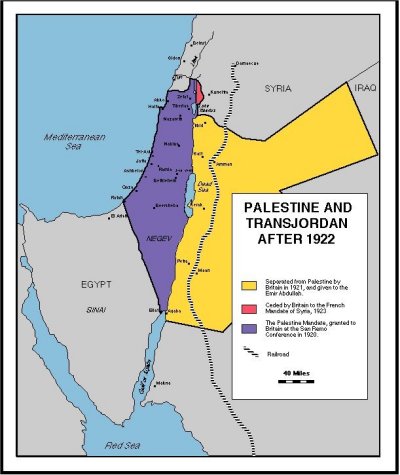
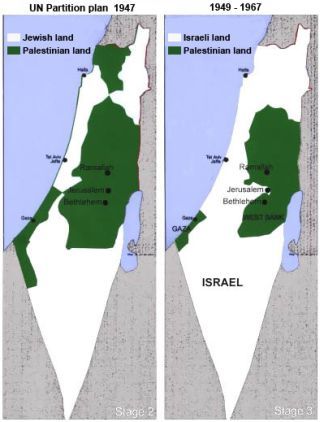
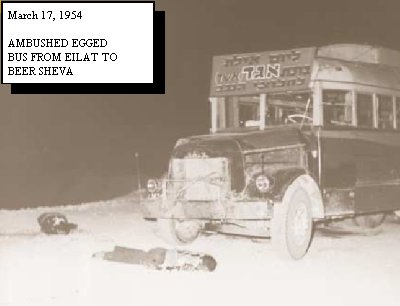


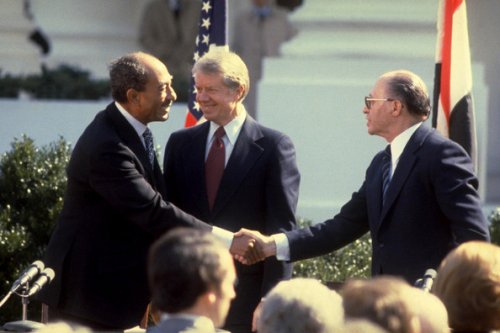

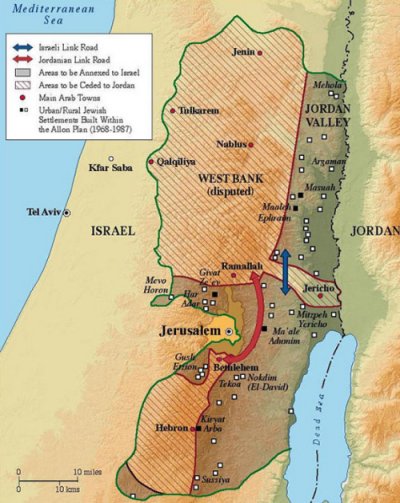
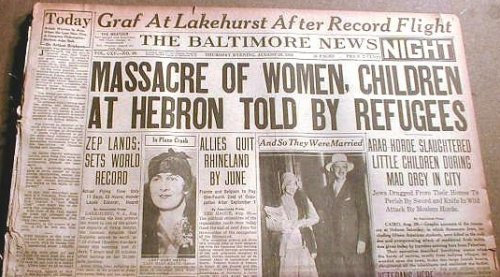
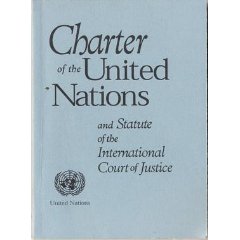
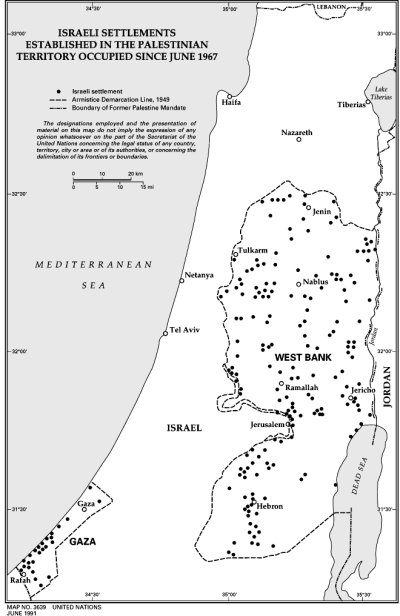







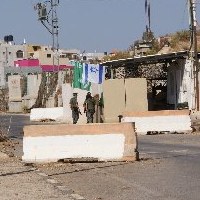




Posted new article #crethiplethi.com about BIG LIES: part 3 http://bit.ly/70N4bt
Posted new article #crethiplethi.com about BIG LIES: part 3 http://bit.ly/70N4bt
lol. jews lived in egypt for few centures. so why dont they leave their country and give it back to us as its our hystorical land. sounds like bull shit? arabs provide us same statments and provments
BIG LIES! http://is.gd/fNKoL #BigArabLies #bds #BDSfail #israel #gaza #guardian #al-taqiyya via @crethiplethi #uk
BIG LIES! http://is.gd/fNKoL #BigArabLies #bds #BDSfail #israel #gaza #guardian #al-taqiyya via @crethiplethi #uk
BIG LIES! http://is.gd/fNKoL #BigArabLies #bds #BDSfail #israel #gaza #guardian #altaqiyya via @crethiplethi #uk
BIG LIES! http://is.gd/fNKoL #BigArabLies #bds #BDSfail #israel #gaza #guardian #taqiyya via @crethiplethi #uk
BIG LIES! http://is.gd/fNKoL #BigArabLies #bds #BDSfail #israel #gaza #guardian #al-taqiyya via @crethiplethi #uk
BIG LIES! http://is.gd/fNKoL #BigArabLies #bds #BDSfail #israel #gaza #guardian #taqiyya via @crethiplethi #uk
BIG LIES! http://is.gd/fNKoL #BigArabLies #bds #BDSfail #israel #gaza #guardian #taqiyya via @crethiplethi #uk
Lying – and stupid @sohakneen || BIG LIES! http://is.gd/fNKoL #BigArabLies #BDSfail #israel #gaza #guardian #taqiyya via @crethiplethi #uk
@sohakneen You can't read? Get help! BIG LIES! http://is.gd/fNKoL #BigArabLies #BDSfail #israel #gaza #taqiyya via @crethiplethi #uk
@exiledsurfer You are the #FAIL. No truth, #bilin Look at the lies about a sick woman. #dhimmi #BDSfail #BigArabLies http://is.gd/fNKoL
http://is.gd/fNKoL Big Arab Lies!
Big Lies: demolishing the myths of the propaganda war against Israel (part 3) http://j.mp/h9v7hX via @AddToAny #eu #uk Stop being fooled!
Big Lies! Lying Arab propaganda aimed at the destruction of Israel http://is.gd/fNKoL #BigArabLies Part 3, Click for other parts. #gaza #bds
Big Lies! Lying Arab propaganda aimed at the destruction of Israel http://is.gd/fNKoL #BigArabLies Part 3,Click for other parts. #gaza #bds
U can believe the hate coming from "#Palestine" but U can't believe its "history" http://is.gd/EEldUX #BigArabLies #antisemitism #landtheft
https://www.crethiplethi.com/big-lies-demolishing-the-myths-of-the-propaganda-war-against-israel-part-3/israel/2009/ #BigArabLies
RT @Akusia: https://www.crethiplethi.com/big-lies-demolishing-the-myths-of-the-propaganda-war-against-israel-part-3/israel/2009/ #BigArabLies
Big Lies: demolishing the myths of the propaganda war against Israel (part 3) | Middle East Affairs. http://fb.me/WhrZxOji
RT @CrethiPlethi: Big Lies: demolishing the myths of the propaganda war against Israel (part 3) | Middle East Affairs. http://fb.me/WhrZxOji
RT @CrethiPlethi: Big Lies: demolishing the myths of the propaganda war against Israel (part 3) | Middle East Affairs. http://fb.me/WhrZxOji
Big Lies: demolishing the myths of the propaganda war against Israel (part 3) | Middle East news, ar http://fb.me/V6F5WCpZ
RT @CrethiPlethi: Big Lies: demolishing the myths of the propaganda war against Israel (part 3) | Middle East news, ar http://fb.me/V6F5WCpZ